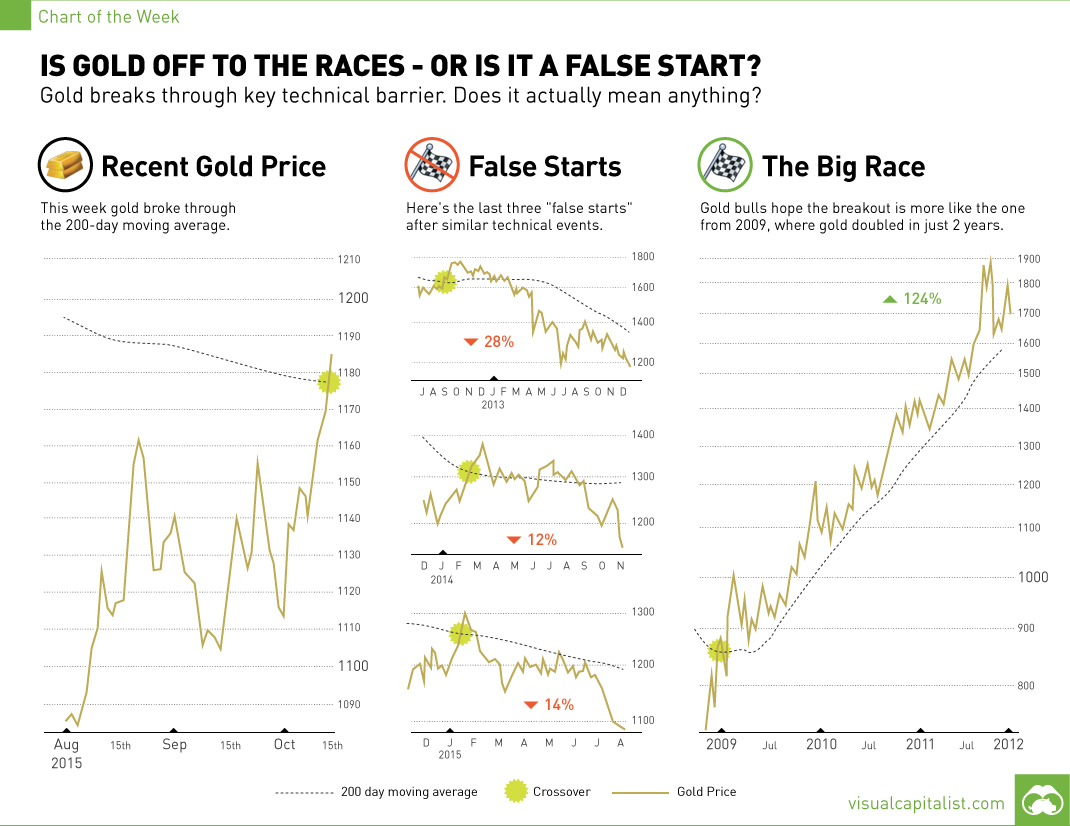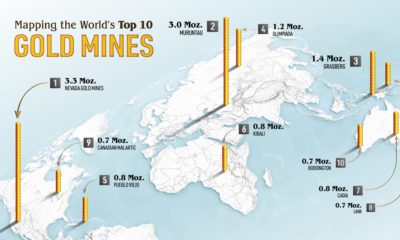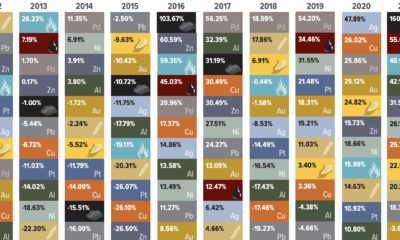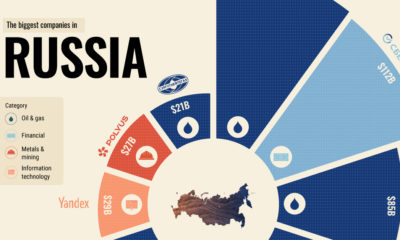Gold: Off to the Races, or Just Another False Start? [Chart]
The Chart of the Week is a weekly Visual Capitalist feature on Fridays. Commodity traders know that gold is highly cyclical, and that it takes significant changes in the fundamentals and sentiment to change the long-term price trend. That said, the latest news on gold is cautiously optimistic for those waiting for a rebound in the precious metal. Over the last few days, gold has broken through its 200-day moving average to reach its highest price in three months at just short of $1,200 per oz. This type of technical breakthrough is rare: over the last six years, gold has touched its 200-day moving average on the upswing six different times. Each time gold emerged from these technical circumstances, the downward momentum of the gold price would remain unaffected. The most recent breakthrough was in early 2015, but gold subsequently fell back through its moving average to finish off -14% lower than it started six months earlier. In 2012 and 2014, similar technical breakthroughs also occurred, ending in similar bearish fates. The subsequent trading was particularly nasty in 2012. After the technical event happened that year, the gold price continued to fall over the course of 16 months by a whopping -28%. That said, crossing the 200-day moving average is still regarded as an important technical event to traders. If you need proof, look back to gold’s largest run in recent memory, which occurred in the aftermath of the Financial Crisis. Gold crossed its 200-day moving average while it was worth a measly $860/oz and soared 124% in value over the next 32 months. It would reach roughly $1,900 per oz, its highest price (in absolute terms) of all time. So will crossing the 200-day moving average mean anything this time around? It’s impossible to say, but there is certainly no shortage of other indicators that may suggest that it is time for investors to pile back into gold stocks.
on Today’s chart measures the extent to which 41 major economies are reopening, by plotting two metrics for each country: the mobility rate and the COVID-19 recovery rate: Data for the first measure comes from Google’s COVID-19 Community Mobility Reports, which relies on aggregated, anonymous location history data from individuals. Note that China does not show up in the graphic as the government bans Google services. COVID-19 recovery rates rely on values from CoronaTracker, using aggregated information from multiple global and governmental databases such as WHO and CDC.
Reopening Economies, One Step at a Time
In general, the higher the mobility rate, the more economic activity this signifies. In most cases, mobility rate also correlates with a higher rate of recovered people in the population. Here’s how these countries fare based on the above metrics. Mobility data as of May 21, 2020 (Latest available). COVID-19 case data as of May 29, 2020. In the main scatterplot visualization, we’ve taken things a step further, assigning these countries into four distinct quadrants:
1. High Mobility, High Recovery
High recovery rates are resulting in lifted restrictions for countries in this quadrant, and people are steadily returning to work. New Zealand has earned praise for its early and effective pandemic response, allowing it to curtail the total number of cases. This has resulted in a 98% recovery rate, the highest of all countries. After almost 50 days of lockdown, the government is recommending a flexible four-day work week to boost the economy back up.
2. High Mobility, Low Recovery
Despite low COVID-19 related recoveries, mobility rates of countries in this quadrant remain higher than average. Some countries have loosened lockdown measures, while others did not have strict measures in place to begin with. Brazil is an interesting case study to consider here. After deferring lockdown decisions to state and local levels, the country is now averaging the highest number of daily cases out of any country. On May 28th, for example, the country had 24,151 new cases and 1,067 new deaths.
3. Low Mobility, High Recovery
Countries in this quadrant are playing it safe, and holding off on reopening their economies until the population has fully recovered. Italy, the once-epicenter for the crisis in Europe is understandably wary of cases rising back up to critical levels. As a result, it has opted to keep its activity to a minimum to try and boost the 65% recovery rate, even as it slowly emerges from over 10 weeks of lockdown.
4. Low Mobility, Low Recovery
Last but not least, people in these countries are cautiously remaining indoors as their governments continue to work on crisis response. With a low 0.05% recovery rate, the United Kingdom has no immediate plans to reopen. A two-week lag time in reporting discharged patients from NHS services may also be contributing to this low number. Although new cases are leveling off, the country has the highest coronavirus-caused death toll across Europe. The U.S. also sits in this quadrant with over 1.7 million cases and counting. Recently, some states have opted to ease restrictions on social and business activity, which could potentially result in case numbers climbing back up. Over in Sweden, a controversial herd immunity strategy meant that the country continued business as usual amid the rest of Europe’s heightened regulations. Sweden’s COVID-19 recovery rate sits at only 13.9%, and the country’s -93% mobility rate implies that people have been taking their own precautions.
COVID-19’s Impact on the Future
It’s important to note that a “second wave” of new cases could upend plans to reopen economies. As countries reckon with these competing risks of health and economic activity, there is no clear answer around the right path to take. COVID-19 is a catalyst for an entirely different future, but interestingly, it’s one that has been in the works for a while. —Carmen Reinhart, incoming Chief Economist for the World Bank Will there be any chance of returning to “normal” as we know it?













